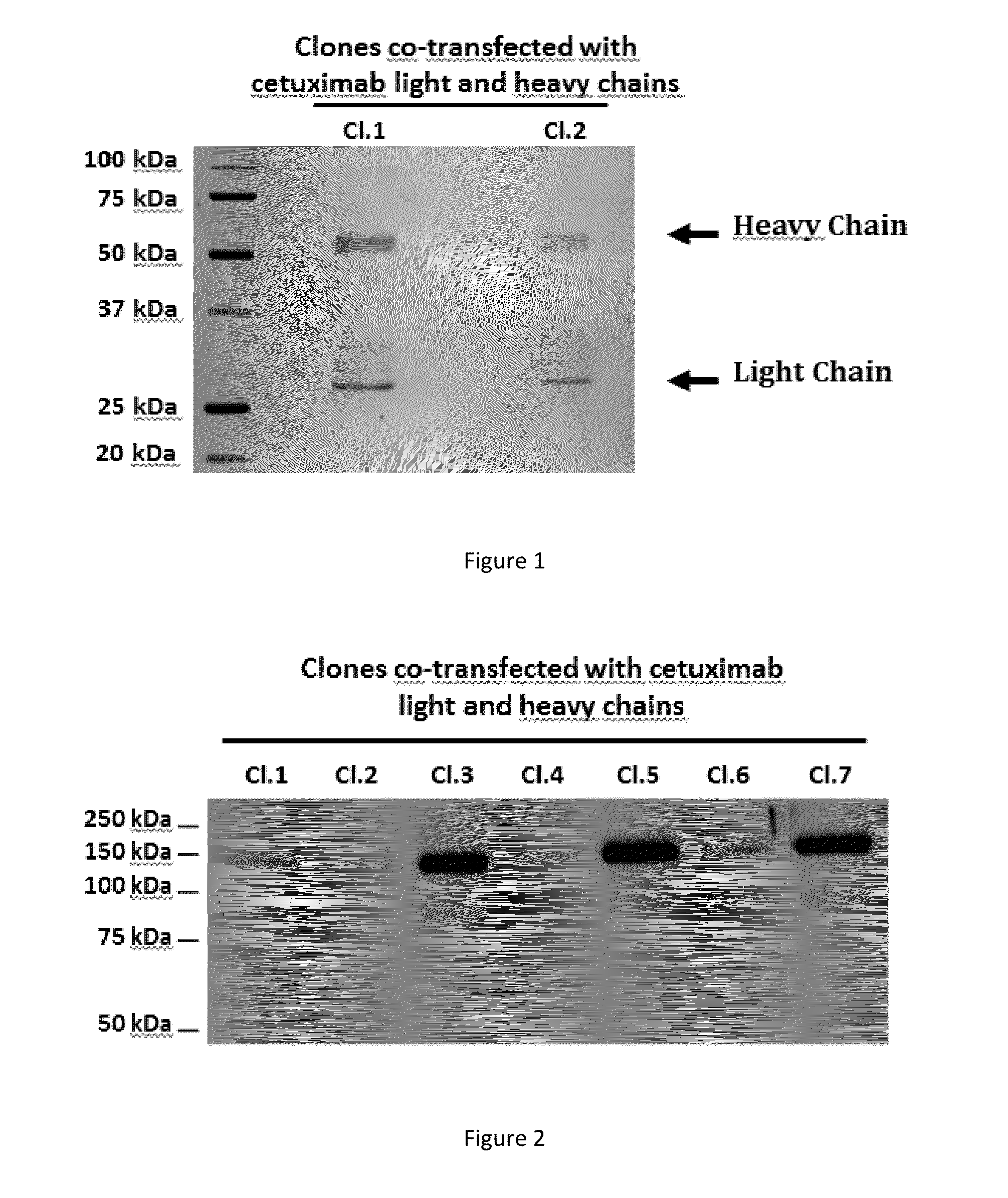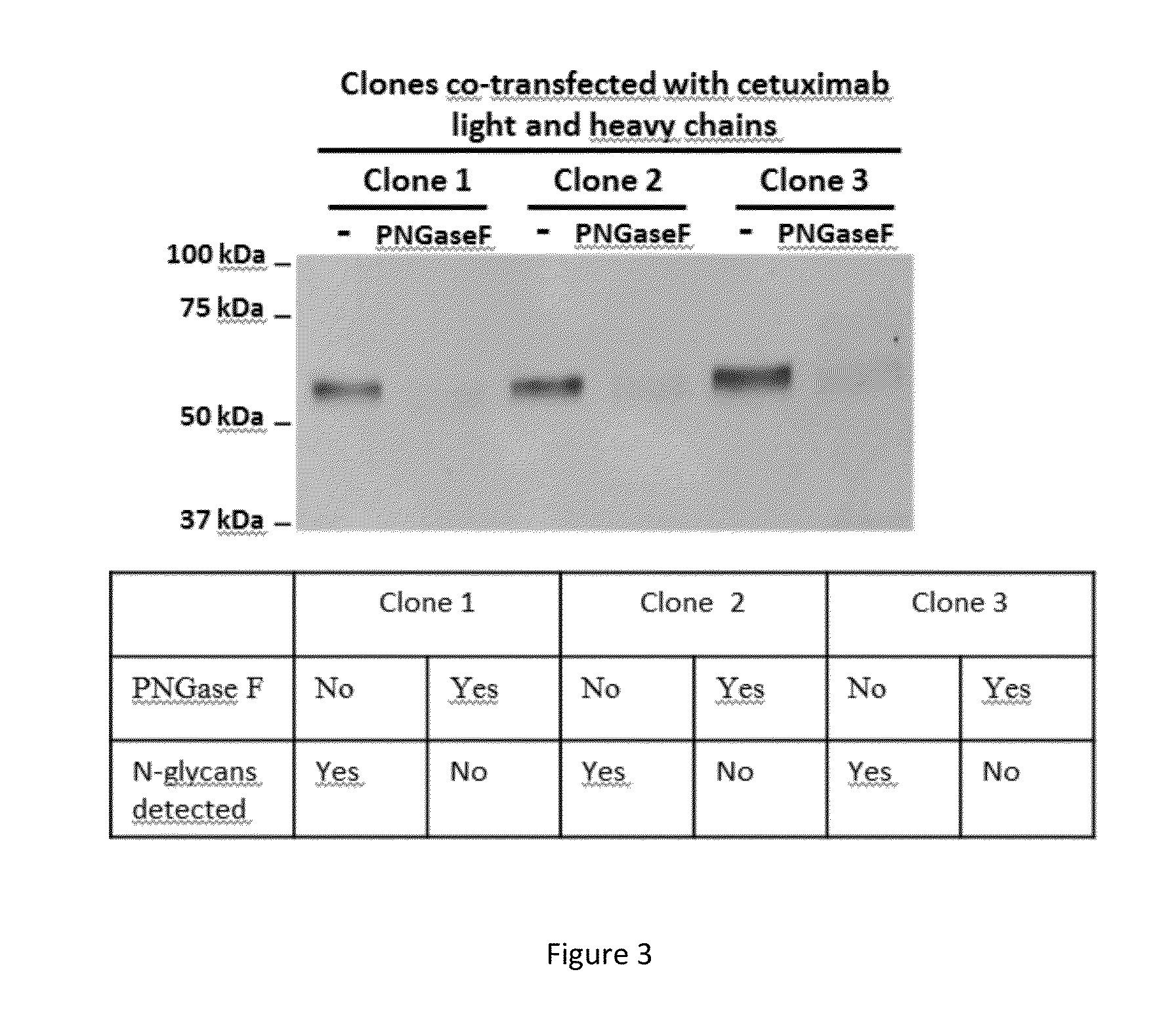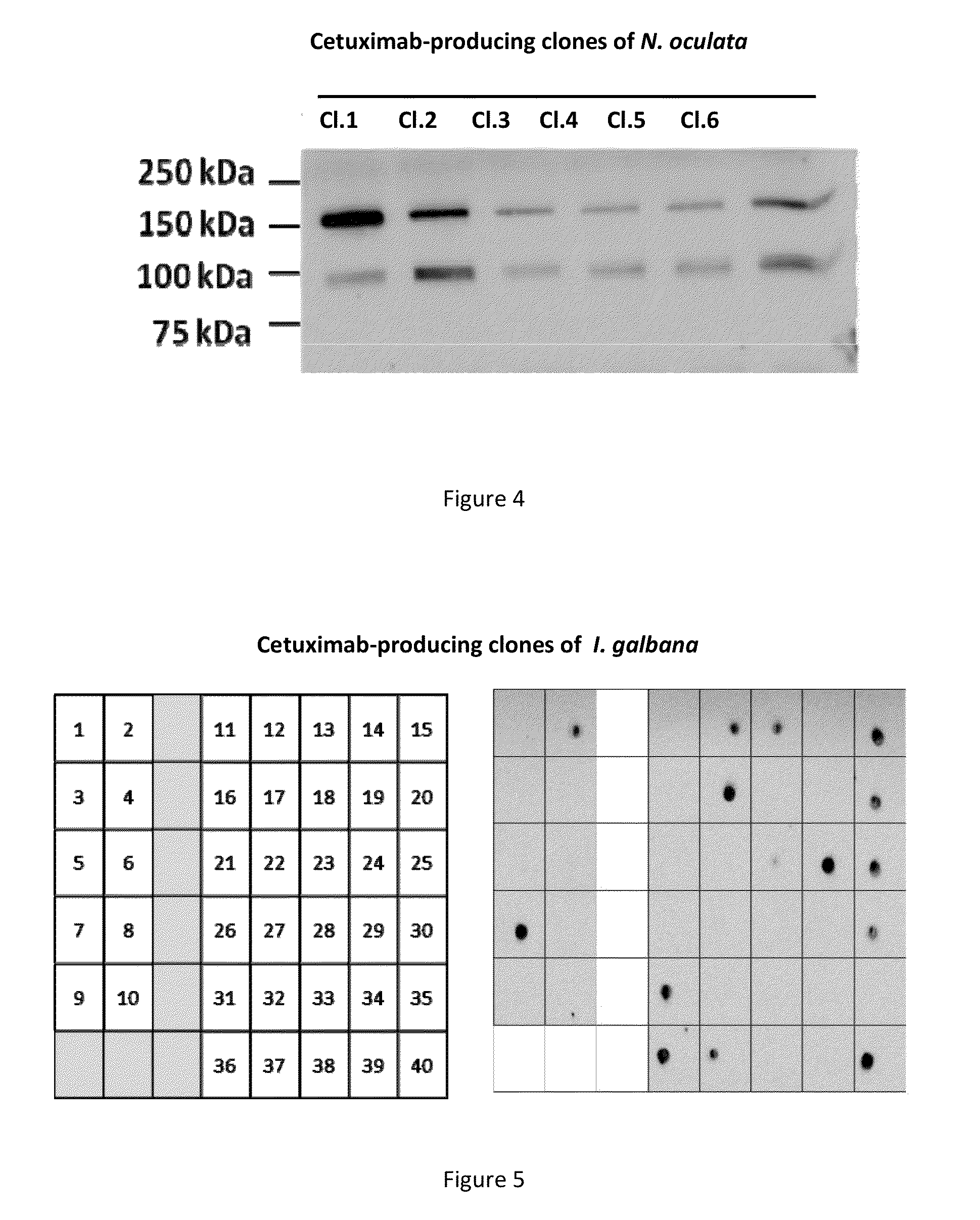Production of secreted therapeutic antibodies in microalgae
a technology microalgae, which is applied in the field of production of secreted therapeutic antibodies in microalgae, can solve the problems of high manufacturing cost, difficult adoption of such technologies by the pharmaceutical industry, drawbacks and limitations of mammalian cells in regard to potential contamination risks, etc., and achieve the effect of increasing antibody-dependent cell-mediated cytotoxicity (adcc)
- Summary
- Abstract
- Description
- Claims
- Application Information
AI Technical Summary
Benefits of technology
Problems solved by technology
Method used
Image
Examples
example 1
Secretion of the Chimeric Monoclonal Antibody Cetuximab in the Culture Medium of Transformed Phaeodactylum tricornutum
[0150]To test the ability of Phaeodactylum tricornutum (P. tricornutum) to express a fully assembled monoclonal antibody that can be secreted into the extracellular medium, the co-transfection of the nuclear genome was carried out with 2 vectors, each containing either the light chain (SEQ ID NO:1) or heavy chain (SEQ ID NO:2) of cetuximab.
[0151]The light chain sequence encoded for a 230 amino acids precursor containing a 17 amino acids heterologous signal peptide and a 213 amino acids mature protein. The heavy chain sequence encoded for a 469 amino acids precursor containing a 17 amino acids heterologous signal peptide and a 452 amino acids mature protein.
[0152]a) Standard Culture Conditions of Phaeodactylum tricornutum
[0153]The diatom Phaeodactylum tricornutum was grown at 20° C. under continuous illumination (280-350 μmol photons·m−2·s−1), in natural coastal sea...
example 2
Expression of the Chimeric Monoclonal Antibody Rituximab in Phaeodactylum tricornutum
[0198]a) Standard Culture Conditions of Phaeodactylum tricornutum
[0199]Diatoms are grown and prepared for the genetic transformation as in example 1.a).
[0200]b) Expression Constructs for Rituximab
[0201]Sequences containing light chain (SEQ ID NO:7) and heavy chain (SEQ ID NO:8) of rituximab are synthesized with the addition of EcoRI and HindIII restriction sites flanking the 5′ and 3′ ends respectively. After digestion by EcoRI and HindIII, each insert is introduced into the pPHA-T1 vector as described in example 1.b.
[0202]c) Genetic Transformation
[0203]The co-transformation of P. tricornutum with pPHA-T1 vectors containing light and heavy chains of rituximab is carried out as described in example 1.c).
[0204]d) Purification of the Rituximab by Affinity Chromatography
[0205]Purification of the rituximab is realized by protein A affinity chromatography as described in example 1.f.
[0206]e) Protein Gel...
example 3
Expression of a MONOCLONAL ANTIBODY of Therapeutic Interest as Listed in Table 1
[0217]The term “MONOCLONAL ANTIBODY” corresponds herein to the name of a monoclonal antibody of therapeutic interest to be secreted in the extracellular medium of diatoms, said name being listed in Table I, and derivatives thereof.
[0218]a) Standard Culture Conditions of Phaeodactylum tricornutum
[0219]Diatoms are grown and prepared for the genetic transformation as in example 1.a).
[0220]b) Expression Constructs for the Monoclonal Antibody of Therapeutic Interest
[0221]Light and heavy chains of the MONOCLONAL ANTIBODY can be constructed using the humanized IgG1 expression plasmid pKANTEX93 (Nakamura et al. (2000) Dissection and optimization of immune effector functions of humanized anti-ganglioside GM2 monoclonal antibody. Mol. Immunol. 37:1035-46). Sequences containing a peptide signal fused to the LCVR or HCVR are synthesized with the addition of appropriate restriction enzymes for inserting into pKANTEX...
PUM
| Property | Measurement | Unit |
|---|---|---|
| Fraction | aaaaa | aaaaa |
| Fraction | aaaaa | aaaaa |
| Fraction | aaaaa | aaaaa |
Abstract
Description
Claims
Application Information
 Login to View More
Login to View More - R&D
- Intellectual Property
- Life Sciences
- Materials
- Tech Scout
- Unparalleled Data Quality
- Higher Quality Content
- 60% Fewer Hallucinations
Browse by: Latest US Patents, China's latest patents, Technical Efficacy Thesaurus, Application Domain, Technology Topic, Popular Technical Reports.
© 2025 PatSnap. All rights reserved.Legal|Privacy policy|Modern Slavery Act Transparency Statement|Sitemap|About US| Contact US: help@patsnap.com



